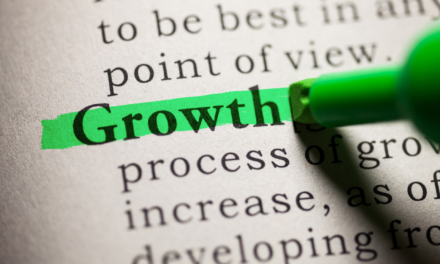Success in setting goals starts with a clear view of the target. Unfortunately, ninety-five percent of us are throwing darts at an invisible target, an undefined dream – one that has no real personal value and so does not empower. Adjusting the lens slightly will bring the target into clearer focus.
A common mistake in setting financial goals is to focus first on the desired lifestyle. Things like the perfect house, right neighborhood, best schools, impressive car, or dream vacation may become the starting point. But by modifying our thinking we can draw a new target. Begin by answering this one question.
Question: If you stopped working today would you still be able to maintain your lifestyle?
A “yes” answer indicates the achievement of the first level of wealth—financial independence, which is freedom. However, “no” is by far the most common answer. As a culture we generally don’t understand wealth. An actress or athlete who earns millions each year might still answer “no” to the question because her lifestyle has ballooned to match the size of her income. Although her paycheck has a few more numbers to the left of the decimal point she, like the rest of us, is dependent on that paycheck to maintain her lifestyle. She may be rich, but she’s not wealthy. We’ve been trained to think of wealth in terms of three classes of people: the rich, the middle class and the poor. In reality there are only two classes throughout the world: those who work for a living and those who are free.
The attributes of true wealth are in direct conflict with the requirements of a wage-paying job. Some jobs pay well but steal the workers time freedom. Others may offer time flexibility but don’t pay enough to provide money freedom. And many workers are robbed of both time freedom and money freedom by the job. Young people often look forward to getting that first job in order to have money and the sense of autonomy that comes with the paycheck. But very soon they succumb to the furious quest for a better job with more favorable working conditions and bigger paycheck. Eventually everyone acknowledges that the end goal is to be able to live well without the job.
Some people find ways to obtain financial independence by age 65, or even earlier. Some may stumble upon an investment, an invention or a business opportunity that creates sudden wealth. But most of us who obtain freedom will need a strategy and plan executed over time. I like to say that most of us will need to:
Fund our Future Freedom
(starting right now!)
and then rigorously scale a lifestyle that will
Fit our Freedom Funding!
Let’s take a moment to sketch out some details.
Notice that freedom is funded now to be enjoyed in the future. As we’re planning for a time when we can live well without working, the following mindset and practices will be required:
- An emphasis on earning rather than spending.
- We will need the spending discipline of living on about 60% -80% of the net household income. Some research would suggest we should live on as little as 40% and utilize the remainder to fund future freedom! Most of us do just the opposite. We begin our work life by assuming that our income will increase over time, so we give ourselves permission to over-spend and get into debt. This dangerous habit begins to snowball until sustaining our lifestyle requires 100% (or more) of our take home pay. At this point, dialing it back to only 60% is a tall order—but usually still possible for those who are determined and who take action immediately.
- We will need an investment discipline of taking only small profits for current use and leaving the rest to grow with the markets. Windfall profits are great but should be used purposefully—only a little as “fun money”, some to re-balancing the spending budget (see item a. above) and the bulk of it put to work earning more profits.
- A focus on residual income.
- Passive income is residual income that continues to flow in even after the work has been completed. It is produced when the work performed, time invested or money expended today goes into a program or financial instrument that continues to pay into the future – generating income without the need for continued work. With a little research, education and determination anyone can find a means of earning passive income.
- Active residual income, also known as the “side hustle” means working a business or project which can supplement the main income, fund savings and provide a fallback in case of job loss. Active residual income does require continued work to keep it flowing, but the work is generally a business venture with greater earning potential and more time flexibility than the typical job with a paycheck.
- The acquisition of appreciating assets. This list traditionally includes some stocks, property, gold, silver, other precious metals, diamonds and more recently cryptocurrencies could be added to the list. When chosen well, these assets can serve as a hedge against inflation and build wealth over time.
Obtaining freedom will involve delaying gratification of certain lifestyle goals until the dream of freedom is adequately “funded”. First, it requires a detailed, calculated and realistic plan and a strategy that takes into account all contingencies. Then it must begin early and be consistently implement over time. Finally, it must include delaying any lifestyle choices that sabotage the freedom plan.
As we seek to build wealth, we want to balance freedom with lifestyle—anticipating a time when lifestyle can be maintained without dependence on a paycheck. In a future conversation we will discuss a thought strategy that will lay the foundation for developing a detailed personal plan. For now, we will simply acknowledge the goal, draw the right target and aim for the bullseye.













